Nitrative and oxidative DNA damage in infection-related carcinogenesis in relation to cancer stem cells
- PMID: 28050219
- PMCID: PMC5203929
- DOI: 10.1186/s41021-016-0055-7
Nitrative and oxidative DNA damage in infection-related carcinogenesis in relation to cancer stem cells
Abstract
Infection and chronic inflammation have been recognized as important factors for carcinogenesis. Under inflammatory conditions, reactive oxygen species (ROS) and reactive nitrogen species (RNS) are generated from inflammatory and epithelial cells, and result in the formation of oxidative and nitrative DNA lesions, such as 8-oxo-7,8-dihydro-2'-deoxyguanosine (8-oxodG) and 8-nitroguanine. The DNA damage can cause mutations and has been implicated in inflammation-mediated carcinogenesis. It has been estimated that various infectious agents are carcinogenic to humans (IARC group 1), including bacterium Helicobacter pylori (H. pylori), viruses [hepatitis B virus (HBV), hepatitis C virus (HCV), human papillomavirus (HPV) and Epstein-Barr virus (EBV)] and parasites [Schistosoma haematobium (SH) and Opisthorchis viverrini (OV)]. H. pylori, HBV/HCV, HPV, EBV, SH and OV are important risk factors for gastric cancer, hepatocellular carcinoma, nasopharyngeal carcinoma, bladder cancer, and cholangiocarcinoma, respectively. We demonstrated that 8-nitroguanine was strongly formed via inducible nitric oxide synthase (iNOS) expression at these cancer sites of patients. Moreover, 8-nitroguanine was formed in Oct3/4-positive stem cells in SH-associated bladder cancer tissues, and in Oct3/4- and CD133-positive stem cells in OV-associated cholangiocarcinoma tissues. Therefore, it is considered that nitrative and oxidative DNA damage in stem cells may play a key role in infection-related carcinogenesis via chronic inflammation.
Keywords: 8-OHdG; 8-nitroguanine; 8-oxodG; Inflammation; Oxidative stress.
Figures


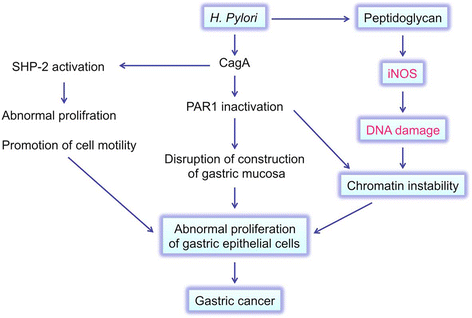
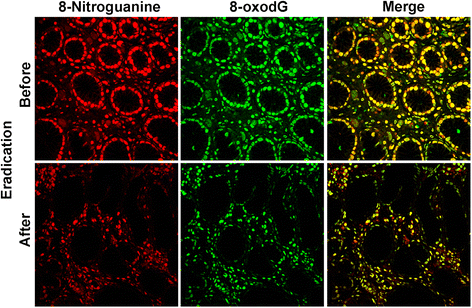

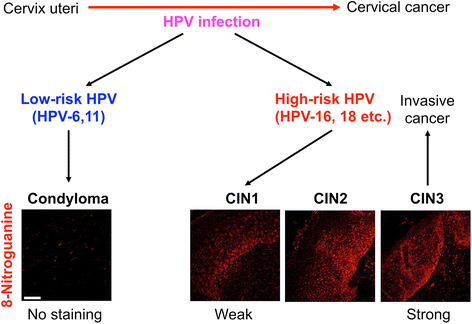
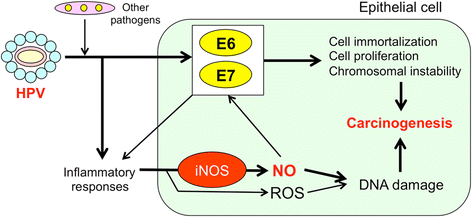


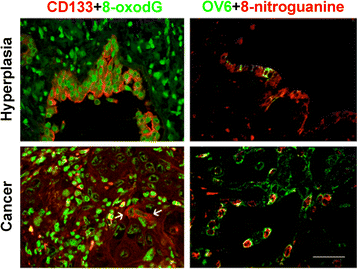
References
-
- IARC . Chronic infections. In: Stewart BW, Kleihues P, editors. World Cancer Report. Lyon: IARC Press; 2008. pp. 128–35.
-
- IARC . IARC monographs on the evaluation of carcinogenic risks to humans “a review of human carcinogens: biological agents.” vol. 100B. Lyon: IARC Press; 2012. Opisthorchis viverrini and clonorchis sinensis; pp. 347–76.
Publication types
LinkOut - more resources
Full Text Sources
Other Literature Sources
Research Materials

